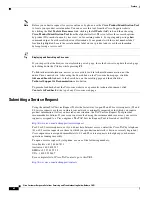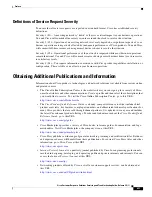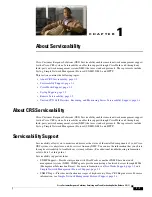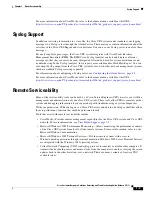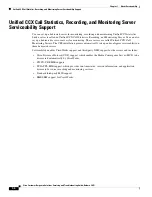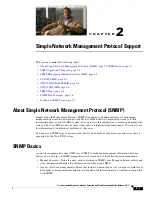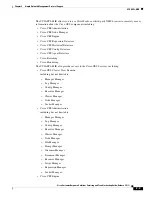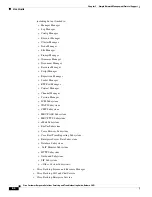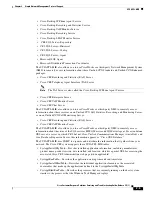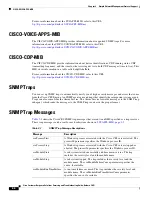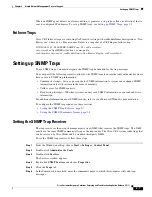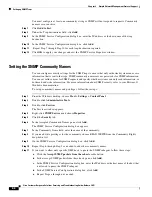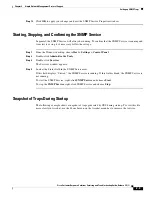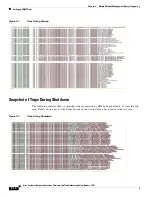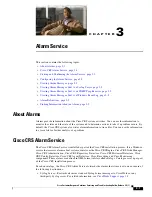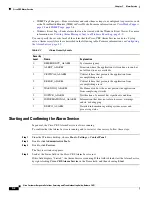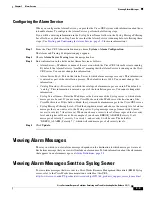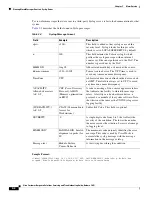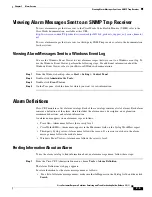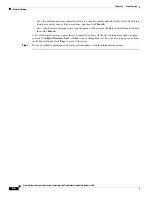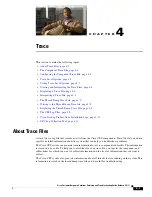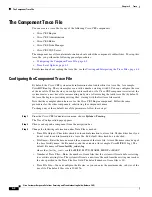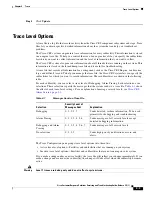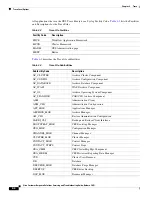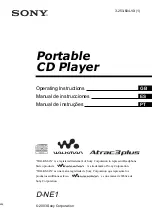
2-6
Cisco Customer Response Solutions Servicing and Troubleshooting Guide, Release 5.0(1)
Chapter 2 Simple Network Management Protocol Support
CISCO-VOICE-APPS-MIB
For more information about the SYSAPPL-MIB, refer to this URL:
ftp://ftp.cisco.com/pub/mibs/v2/SYSAPPL-MIB.my
CISCO-VOICE-APPS-MIB
The CISCO-VOICE-APPS-MIB provides information about supported SNMP traps. For more
information about the CISCO-VOICE-APPS-MIB, refer to this URL:
ftp://ftp.cisco.com/pub/mibs/v2/CISCO-VOICE-APPS-MIB.my
CISCO-CDP-MIB
The CISCO-CDP-MIB provides information about device identifications, CDP running status, CDP
transmitting frequency, and the time for the receiving device to hold CDP messages (time to live). This
MIB stores information in a table called cdpGlobalInfo.
For more information about the CISCO-CDP-MIB, refer to this URL:
ftp://ftp.cisco.com/pub/mibs/v2/CISCO-CDP-MIB.my
SNMP Traps
You can set up SNMP traps to automatically notify you of high-severity messages and errors that come
from the Cisco CRS Engine. An SNMP agent can send traps that identify these important system events.
Traps can also come from the Alarm Service. The Alarm Service forwards messages to the SNMP trap
subagent, which sends the messages to the SNMP trap receiver in the proper format.
SNMP Trap Messages
Table 2-1
shows the Cisco CRS SNMP trap messages that are sent to an NMS specified as a trap receiver.
These trap messages can be sent for each subsystem shown in
SYSAPPL-MIB, page 2-2
.
Table 2-1
SNMP Trap Message Descriptions
Message
Description
cvaProcessStart
A Windows process associated with the Cisco CRS server started. The
processId parameter specifies the Windows process ID.
cvaProcessStop
A Windows process associated with the Cisco CRS server stopped or
aborted. The processId parameter specifies the Windows process ID.
cvaModuleStart
A subsystem started successfully and became in-service. The trap
includes the severity level and the module name.
cvaModuleStop
A subsystem stopped. The trap includes the severity level and the
module name. The cvaModuleFailureCause parameter specifies the
cause, if available.
cvaModuleRunTimeFailure
A run-time failure occurred. The trap includes the severity level and
module name. The cvaModuleRunTimeFailureCause parameter
specifies the cause, if available.
Summary of Contents for Cisco Unified Queue Manager
Page 21: ...P A R T I Serviceability ...
Page 22: ......
Page 61: ...P A R T I I Troubleshooting ...
Page 62: ......

